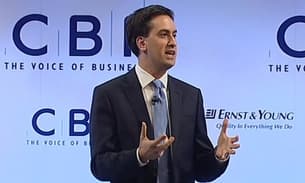
Tory tax breaks for the wealthy
Conservative tax reductions for corporations but not for ‘squeezed middle’ Flick/Images_of_Money
The Bureau has analysed tax changes introduced under the Coalition government and found that much of the Treasury’s activity has focused on offering tax reductions to the wealthiest sections of society.
Corporation tax reduction
In his first budget, George Osborne announced a 5% cut to the main rate of corporation tax from 28% to 23% phased over four years.
This will ultimately give the UK the lowest CT rate in the G7 – good news for domestic companies and inward investors alike. This change will only apply to companies and groups whose annual profits exceed £1.5m.
The chancellor argues this reduction is to make Britain more competitive as a destination for businesses, and will be made up by deep cuts to capital allowances, slated to raise £1.8bn.
Critics say capital allowance changes will hit smaller manufacturing companies the hardest. Meanwhile, official estimates suggest the lower corporation tax rate could cost the Treasury £4.1bn a year.
Reduction in stamp duty for bulk buying
This tax is designed to encourage banks and large scale institutions to buy properties and get the house market moving. Previously, large property portfolios were taxed according to their overall value, often triggering the 5% stamp duty. Now it is calculated according to the average value of properties purchased, which usually means they are taxed at a lower rate.
Banks and investors will gain from this reform though real estate companies stand to gain the most. In 2011 donors from this sector contributed £617,665.55 to the Conservative party.

Entrepreneurs’ relief doubled
When the Conservatives came to power, entrepreneurs could make up to £2m and were only taxed at 10%. Now that tax rate applies to gains up to £10m. Gains over the initial £10m are taxed at the standard capital gains tax rate of 28%.
The potential maximum amount of tax relief has doubled to £1.8m.
This move has not been without criticism. The conditions of relief depend on how a company is structured. Crucially, shareholders are denied the relief if they hold less than 5% of the company – denying the benefit to the vast majority of employee shareholders and share option holders.
Income tax relief under Enterprise Investment Scheme (EIS)
The government has passed legislation amending the Enterprise Investment Scheme (EIS), increasing upfront income tax relief from 20% to 30%.
This legislation appears specifically aimed at funding smaller enterprises. The qualifying levels will be raised to allow companies with a maximum of 250 employees and gross assets of no more than £15m to qualify for investment under the EIS scheme. In addition, while companies are currently only allowed to raise up to £2m in any 12 month period, this is set to increase by a remarkable 400% to £10m – clearly benefiting bigger businesses.

It is also designed to encourage wealthy investors to put money into smaller enterprises which are finding it harder and more expensive to take loans from banks.
Currently an individual can invest up to £500,000 under the scheme – this will double again from April 2012 to £1m.
Foreign branch tax exemption
Perhaps the most notable tax change is the ‘optional permanent exemption for all overseas branches’. This exempts profits from overseas branches of UK companies being liable for corporation tax.
The profit or loss of each foreign branch is deducted from company’s worldwide profit calculation and aligns the legislation with the tax treatment of foreign subsidiaries. This law is set to benefit companies that can operate abroad. It could be especially valuable to banks and insurers.




